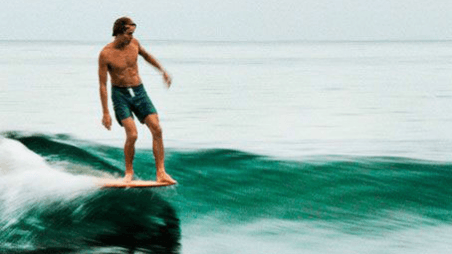How to get fit for your Surfing Vacations?
Surfing is not snowboarding, nor is it skateboarding. You don’t lie down on your snowboard then pop up just as you are gathering speed. Nor does snowboarding or skateboarding require you to paddle your way back up the hill after a big run. One of the hardest things about surfing is paddling into waves, which requires a lot of upper body strength. Surfing requires a lot of strength, endurance, and balance. Here are some tips that will help you improve on all these to enjoy a better surfing experience.
Swimming:
Swimming is a great way to get ready for surfing. It works out some muscles that will be used while paddling on a surfboard, becoming familiar with being in water, coordinating your breathing and holding your breath while working out in the water. Spending 1 or 2 hours a week swimming in a pool will definitely make your surfing experience much more comfortable.
Yoga:
All types of Yoga will benefit your surfing, by working on your balance, core strength, breathing and flexibility.
Gym:
Check out this article from Outside Magazine on Surf Fitness.
Fit to Surf: By Ryan Brandt
SURFING DAILY is the best way to stay wave-ready, but what if you live in Wichita? For you, we tapped Tim Brown, a physiologist who works with world champ, Kelly Slater and Chicago’s Pete Lambert, a phys-ed teacher who swims to stay in shape for Lake Michigan’s sporadic breaks. Their plans build the strength, endurance, and balance needed to thrive on the waves.
Dr. Brown played quarterback – as well as receiver – for his college football team at the University of the Redlands and led them to an undefeated league
record over 4 years. As an oft-injured athlete, he spent a lot of time in the training room. At that time, all treatment and therapy focused on the injured body part. Nothing focused on the functional imbalances that almost always represent the cause of injury. This was a motivating factor in his decision to become a sports doctor.
STRENGTH
Tim Brown’s workout mimics the effort of paddling out.
Twice a week:
- 3 sets x 30 second sets of push-ups, switching from narrow to regular to wide arm placement with each set
- 3 sets x 7 reps of each dumbbell lift below (no rest between lifts or sets)
-
1. Reverse-Grip Curls
- Hold the dumbbells on your thighs, palms facing your legs. Keeping your elbows tucked into your waist, slowly curl the weights to your shoulders, then lower them back down.
-
2. Front Military Press
- Hold the dumbbells at shoulder height, palms facing out. Press weights overhead and 12 inches in front of your head until arms are straight. Slowly lower to shoulders.
-
3. Bent-Over Rows
- Holding dumbbells in each hand, bend forward at your hips while looking straight ahead and keeping your back flat, until your back is almost parallel to the floor. Lift weights to your chest, then slowly lower them back down.
-
4. Overhead Triceps
- Extensions Press the dumbbells overhead. Keeping your elbows close to your head, slowly lower the weights behind you until your forearm is parallel to the ground, then slowly raise them back up.
-
5. Upright Rows
- Hold the dumbbells against your thighs. Raise the weights to your shoulders, extending your elbows out to your sides (they should finish above your shoulders). Slowly lower them back down.
(Note: use enough weight with the dumbbell exercise to struggle on the 7th rep)
- End with 3 sets of pull-ups, alternating narrow, regular, and wide grip.
ENDURANCE
Pete Lambert builds lung power with pool workouts that approximate the stroke and effort needed to paddle out and catch a wave.
1. Twice a Week:
- Swim 4 x 50 meters with a float buoy strapped to your feet
- 8 x 25 meters with your head above water
2. Once a Week:
- Sprint (swimming) 6 x 100 meters
- 8 x 50 meters
- 10 x 25 meters
(Rest for 30 seconds between each interval)
- Build your lung capacity by increasing the number of strokes you take between each breath, starting each lap at two and increasing to seven
BALANCE
Brown suggests tuning your equilibrium (a state of rest or balance due to the equal action of opposing forces) with a balance trainer like the I ndo Board.
Three six-minute balancing sessions per week, in a surfer’s stance, should do the trick.
Level 1:
Keep the board level for 90 seconds; in this same position, bounce a tennis ball against a wall three feet away for 90 seconds; then stand still with your eyes closed for another 90 seconds. Master this, then take the exercises to the next level, and so on—without letting the board hit the floor.
Level 2:
Rock back and forth.
Level 3:
Stand still in a squat position.
Level 4:
Do slow squats.
For more surf related Indo Board Exercises see our “Indo Board Workouts for Surfers” blog post

